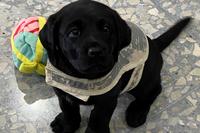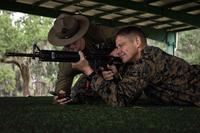The worst week so far in the Iraq war has gotten much, much worse.
"A U.S. Army CH-47 Chinook transport helicopter packed with soldiers headed for a short-term break was hit with a missile and crashed in a field west of Baghdad on Sunday morning, killing 16 soldiers and wounding 20 others," the Washington Post reports. It's the single deadliest attack of American forces since the start of Gulf War II.
The shoulder-fired missile streaked through a clear blue sky and struck the dual-rotor helicopter in its rear around 9 a.m. as it was ferrying soldiers from bases in western Iraq to Baghdad's international airport...
The force of the impact destroyed the 10-ton Chinook, scattering twisted and charred bits of fuselage over a wide area. Everyone on board was killed or injured, many of them severely, military officials said...
The missile strike provided an example of the increasing sophistication and lethality of attacks on U.S. forces in Iraq. Resistance fighters who began their effort to evict American troops by indiscriminately firing guns and rocket-propelled grenades at supply convoys now are targeting well-fortified bases with mortars, firing volleys of rockets inside the seat of the U.S. occupation authority, concealing roadside bombs and launching antiaircraft missiles.
Iraqi "Guerrillas are known to have fired missiles at American planes two or three times a week, and ground fire at helicopters even more often," the Times notes. "Only defensive tactics and devices had enabled aircraft to avoid disaster until Sunday."
Fewer than a third of the 5,000 shoulder-fired missiles in Saddam's stockpile have been accounted for.
These weapons are a constant threat to American helicopters. "But there appears to be no ready means to avoid flying," the Times says.
In a country the size of California, where more than 150,000 American and allied troops are operating, routine daily missions must go on, and every method of moving people and things around Iraq is dangerous.
Armored convoys can carry tons of equipment, supplies and ammunition, but they are under growing attack from homemade roadside bombs. They require escorts and are limited in how quickly they can deliver essential troops and matriel.
So commanders must also rely on scores of Army helicopters, from Black Hawks to the giant, twin-rotor Chinooks, and a fleet of Air Force cargo planes to ferry ammunition, equipment and personnel on hundreds of flights a day across Iraq.
"There's no way to stop using large cargo aircraft," said Walter P. Lang, a former chief Middle East analyst for the Defense Intelligence Agency. "There's just so much stuff."
THERE'S MORE: The New York Times Magazine has the most detailed examination yet of why the Iraq afterwar has gone so wrong. It's a must read.







